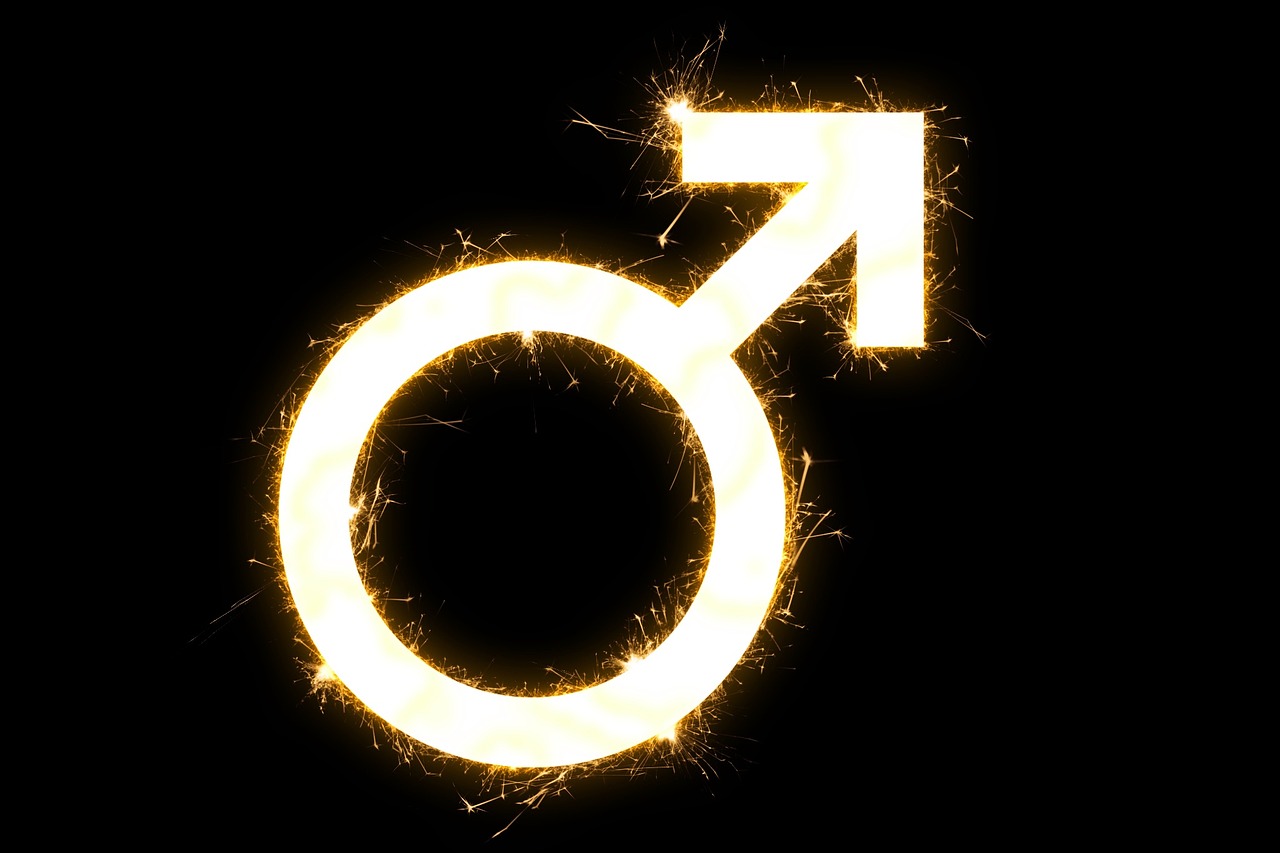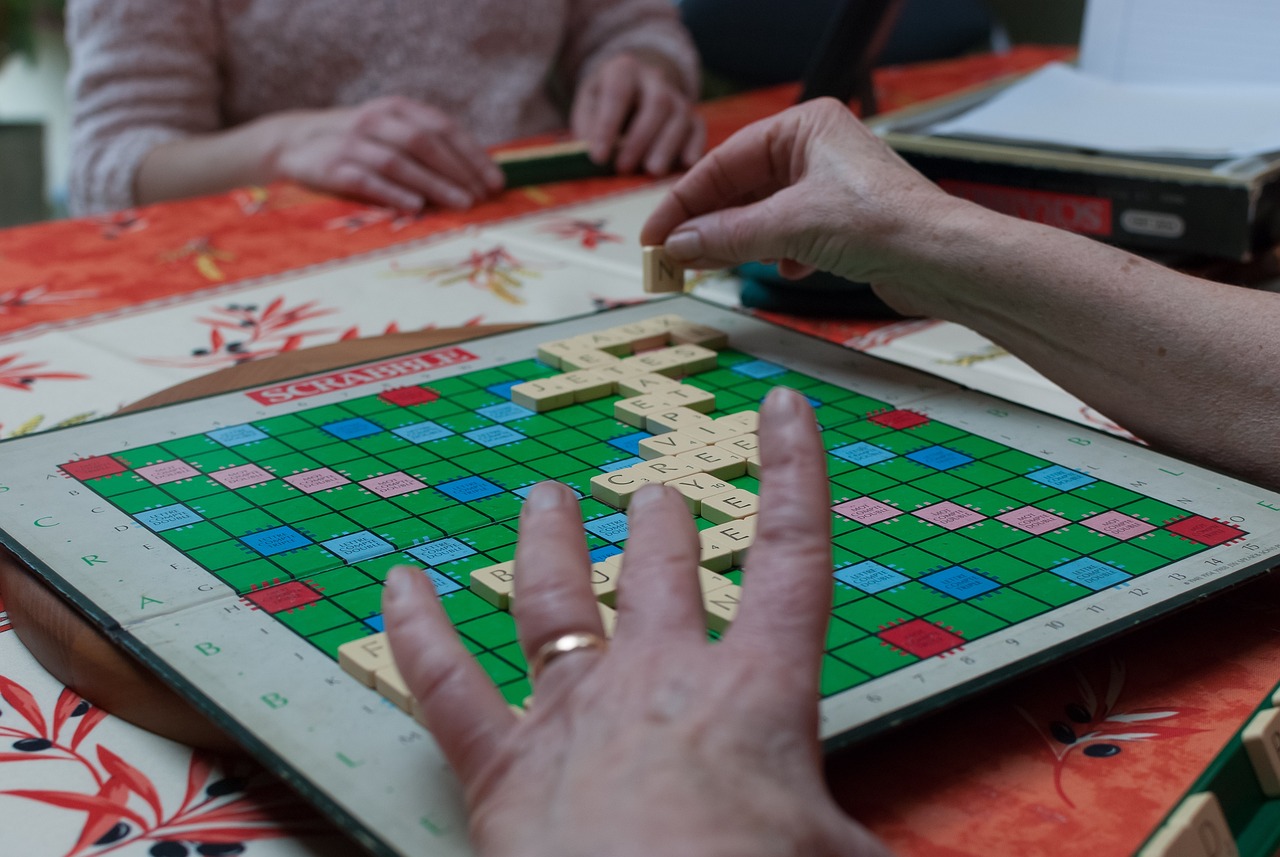Do Symbols Hold a Philosophical Meaning?
Have you ever paused to think about the power of symbols in our lives? From the simple heart emoji that conveys love to the intricate designs of ancient hieroglyphs, symbols are all around us, silently shaping our thoughts and emotions. They are not just mere representations; they embody complex ideas and beliefs that transcend language and culture. In this article, we will embark on a journey to explore the philosophical significance of symbols, examining how they play a crucial role in communication, culture, and meaning-making. So, buckle up as we delve into the fascinating world where symbols influence our understanding of reality and human thought!
To truly grasp the philosophical meaning behind symbols, we must first understand what they are. Symbols are representations that convey deeper meanings beyond their literal interpretations. Unlike signs, which have a direct correlation to what they represent (think of a stop sign), symbols carry a wealth of meanings shaped by cultural context, personal experiences, and societal norms. For instance, the color red can symbolize love, danger, or even anger, depending on the context in which it's used. This multifaceted nature of symbols allows them to convey complex ideas and emotions, making them indispensable tools in human communication.
Throughout history, symbols have played a vital role in how cultures communicate beliefs, values, and social structures. From ancient civilizations to modern societies, the evolution of symbols reflects the changing dynamics of human thought. Each culture has developed its own set of symbols that encapsulate their worldview, serving as a bridge between the tangible and the abstract. For example, the ancient Egyptians used symbols like the ankh to represent life and immortality, while the Chinese employed characters that encapsulated philosophical concepts like harmony and balance. Understanding the historical context of symbols provides insight into their enduring significance in shaping human experience.
In ancient societies, symbols were integral to religion, governance, and daily life. Take the ancient Egyptians, for instance. Their use of hieroglyphs was not merely a writing system; it was a complex form of communication that conveyed profound spiritual and cultural meanings. Similarly, the Mesopotamians used symbols in their cuneiform writing to document everything from trade transactions to epic tales, illustrating how symbols served as a foundation for societal organization.
Religious symbols, such as the cross in Christianity or the crescent moon in Islam, encapsulate profound beliefs and rituals. These symbols serve as focal points for faith and community identity, often uniting individuals under a shared banner of belief. For example, the cross is not just a representation of a religious figure; it embodies the concepts of sacrifice, redemption, and hope for millions around the world. Such symbols create a sense of belonging and purpose, illustrating the deep philosophical meaning they hold.
Political symbols, like flags and emblems, play a crucial role in representing national identity and values. They influence public perception and foster unity among citizens. Consider the American flag, which symbolizes freedom and democracy. Its colors and design evoke strong emotions and a sense of pride. During times of turmoil, such symbols can galvanize communities and inspire collective action, demonstrating how deeply intertwined symbols are with human experiences and societal structures.
As we progress into contemporary society, the interpretation of symbols continues to evolve. The digital age has introduced new symbols, such as hashtags and emojis, that reflect changes in cultural attitudes and communication styles. These modern symbols have the power to convey complex ideas in an instant, bridging gaps between diverse populations. However, this rapid evolution also raises questions about the permanence and universality of symbols in a world that is constantly changing.
To understand the philosophical implications of symbols, we can explore various theories, including semiotics and existentialism. Semiotics, the study of signs and symbols, emphasizes the relationship between signifiers (the symbols) and what they signify (the meanings). This framework helps us analyze how symbols function within systems of meaning, revealing the intricate connections between language, thought, and culture. On the other hand, existentialist perspectives highlight the role of symbols in individual meaning-making. In a complex world, symbols can guide our quests for authenticity and understanding, serving as beacons in our search for personal truth.
The influence of symbols extends beyond individual interpretation; they shape cultural narratives, social movements, and collective identity. In activism, symbols can galvanize communities, communicate powerful messages, and foster solidarity. For instance, the raised fist has become a universal symbol of resistance and empowerment, resonating with various social justice movements across the globe. Similarly, in media and advertising, symbols are employed strategically to shape public perception and influence consumer behavior. Understanding these dynamics reveals the profound impact symbols have on society.
In conclusion, symbols hold a lasting significance in human life. They shape our thoughts, culture, and the philosophical quest for meaning. As we navigate the complexities of existence, symbols provide a framework for understanding our experiences and connecting with others. Whether through ancient hieroglyphs or modern emojis, the power of symbols endures, reminding us of our shared humanity and the rich tapestry of meanings we create together.
- What is the difference between a symbol and a sign? A symbol represents complex ideas and emotions, while a sign has a direct correlation to what it denotes.
- How do symbols influence culture? Symbols encapsulate cultural beliefs and values, shaping how communities communicate and understand their world.
- Can symbols change over time? Yes, symbols can evolve as cultural attitudes shift, reflecting new meanings and interpretations.

The Nature of Symbols
Symbols are fascinating entities that transcend mere representation; they are the building blocks of communication and understanding. At their core, symbols are arbitrary signs that hold meaning beyond their physical form. Think of a symbol as a bridge connecting the tangible world with abstract ideas. For instance, a simple heart shape is not just a drawing; it conveys feelings of love and affection, evoking emotions that words sometimes struggle to express. This intrinsic ability to encapsulate complex ideas and emotions makes symbols essential in human interaction.
One of the key characteristics that set symbols apart from signs is their multidimensionality. While a sign typically points to a specific object or idea—like a stop sign indicating the need to halt—symbols carry layers of meaning. They can evoke personal experiences, cultural narratives, and collective memories. For example, the dove is not just a bird; it often symbolizes peace and hope, resonating with individuals on various levels. This rich tapestry of meanings allows symbols to function within different contexts, making them incredibly versatile in communication.
Moreover, symbols are deeply embedded in our cultural fabric. They reflect societal values, norms, and beliefs, acting as mirrors that show us who we are and what we hold dear. In different cultures, symbols can vary significantly, yet they often serve similar purposes—conveying messages, maintaining traditions, or even challenging the status quo. For instance, the color red can symbolize love in one culture and danger in another. This duality illustrates how the context in which a symbol is used can drastically alter its interpretation.
To further understand the nature of symbols, we can categorize them into two main types: conventional symbols and natural symbols. Conventional symbols are those that society agrees upon, like national flags or traffic signals. In contrast, natural symbols arise from the intrinsic qualities of the objects they represent, such as the sun symbolizing life and energy. Both types play crucial roles in our daily lives, influencing our perceptions and interactions.
In summary, the nature of symbols is complex and multifaceted. They are not just tools for communication but are vital in shaping our understanding of reality. As we navigate through life, we constantly interpret and reinterpret symbols, allowing them to guide our thoughts, emotions, and actions. The next time you encounter a symbol—be it a logo, an emblem, or even a gesture—take a moment to reflect on the rich meanings it may hold and how it connects you to a broader narrative.

The Historical Context of Symbols
Throughout history, symbols have served as powerful tools for communication, transcending language barriers and cultural differences. They encapsulate complex ideas, emotions, and beliefs, allowing societies to convey messages that might otherwise be difficult to articulate. From ancient hieroglyphics to modern logos, symbols have evolved, yet their core purpose remains the same: to represent and communicate meaning. The historical context of symbols reveals not only their significance in various cultures but also how they have shaped human understanding and interaction.
In ancient civilizations, symbols were often linked to religion, governance, and daily life. For instance, in Egypt, the Ankh symbolized life and immortality, while the Eye of Horus represented protection and royal power. These symbols were not just decorative; they were integral to the culture's belief systems and were used in religious texts and artifacts to convey messages about the afterlife and divine protection.
Similarly, in Mesopotamia, symbols like the cuneiform script were pivotal in documenting laws, trade, and history. This early form of writing utilized symbols to represent sounds and ideas, making it one of the earliest examples of how symbols can encapsulate complex information. The use of symbols in these ancient societies showcases their importance in maintaining social order and preserving cultural heritage.
As we delve deeper into ancient civilizations, we can see how symbols were woven into the fabric of society. For example, the Swastika, which has roots in Hinduism and Buddhism, originally symbolized good fortune and well-being. However, its appropriation in the 20th century transformed its meaning, illustrating how the context of symbols can dramatically shift over time.
Religious symbols have always held profound significance for communities. Take the cross in Christianity, for instance. It represents sacrifice, redemption, and faith. For many, it is more than just a symbol; it embodies a way of life and a community's collective identity. Similarly, the crescent moon in Islam signifies faith and the passage of time, marking important events in the Islamic calendar.
Political symbols, such as national flags and emblems, are crucial in representing a nation's identity and values. They evoke feelings of pride, unity, and sometimes, resistance. For example, the American flag is a powerful symbol of freedom and democracy, while the hammer and sickle historically represented the working class and the communist movement. These symbols can influence public perception and foster a sense of belonging or division within a society.
As we analyze the historical context of symbols, it becomes clear that they are not static; they evolve alongside societal changes. In modern times, symbols have adapted to reflect contemporary issues, technologies, and cultural shifts. The rise of digital media has introduced new symbols, like emojis, which serve as a universal language in online communication.
In conclusion, the historical context of symbols reveals their enduring significance in human life. They are not merely decorative; they are powerful agents of meaning that shape our understanding of reality. Whether through ancient hieroglyphs or modern logos, symbols continue to influence our thoughts, beliefs, and actions, reminding us of the intricate tapestry of human culture.
- What is the difference between a symbol and a sign?
A symbol represents an idea or concept, while a sign usually indicates a specific meaning or instruction. Symbols often have deeper meanings and can evoke emotions, whereas signs are more straightforward.
- How do symbols influence culture?
Symbols shape cultural narratives by conveying shared beliefs and values. They can unite communities and foster a sense of identity, impacting how individuals perceive themselves and their place in society.
- Can symbols change meaning over time?
Yes, symbols can evolve and take on new meanings due to cultural shifts, historical events, or societal changes, illustrating the dynamic nature of human communication.

Symbols in Ancient Civilizations
Throughout history, symbols have served as powerful tools for communication and expression, particularly in ancient civilizations. These early societies, such as those in Egypt and Mesopotamia, relied heavily on symbols to convey complex ideas, beliefs, and social structures. For instance, hieroglyphics in Egypt were not merely a means of writing; they were intricate symbols that represented sounds, ideas, and even spiritual concepts. Each symbol held layers of meaning that could convey messages far beyond their visual representation, acting as a bridge between the mundane and the divine.
In ancient Mesopotamia, the use of cuneiform writing exemplified how symbols could encapsulate a civilization's administrative and economic systems. These wedge-shaped marks on clay tablets were not just practical tools for record-keeping; they were symbols of power and governance. The ability to read and write cuneiform was exclusive to a small group of scribes, which reinforced social hierarchies and the importance of literacy in maintaining order within society.
Moreover, symbols in ancient cultures often carried religious significance. For example, the ankh in Egyptian culture represented life and immortality, while the Eye of Horus symbolized protection and royal power. These symbols were not just decorative; they were deeply embedded in the cultural psyche and served as focal points for rituals and beliefs. The use of such symbols helped individuals connect with their spirituality and reinforced community identity.
To illustrate the significance of symbols in these ancient civilizations, let’s take a look at a table that summarizes some key symbols and their meanings:
| Symbol | Civilization | Meaning |
|---|---|---|
| Ankh | Egypt | Life and immortality |
| Eye of Horus | Egypt | Protection and royal power |
| Cuneiform | Mesopotamia | Administration and record-keeping |
| Spiral | Various | Growth and evolution |
These symbols not only reflect the values and beliefs of their respective cultures but also demonstrate how ancient civilizations utilized symbols to communicate ideas that transcended language barriers. Just as a painting can evoke emotions and provoke thoughts, so too can these symbols encapsulate the essence of a society’s worldview. As we delve deeper into the significance of symbols, it becomes evident that they are not just relics of the past but continue to shape our understanding of identity, culture, and even philosophy today.
- What role did symbols play in ancient religions? Symbols were integral to religious practices, often representing deities, beliefs, and rituals that helped individuals connect with the divine.
- How did symbols influence social structures in ancient civilizations? Symbols often reinforced social hierarchies, with literacy and the ability to interpret symbols being exclusive to certain classes, thus maintaining power dynamics.
- Are symbols still relevant in modern society? Absolutely! Symbols continue to play a crucial role in communication, culture, and identity, evolving with societal changes while retaining their core significance.

Religious Symbols
Religious symbols are not just mere representations; they are powerful conduits of faith and meaning. These symbols encapsulate the beliefs, values, and rituals of various religions, serving as focal points for community identity and personal spirituality. For instance, consider the cross in Christianity. It represents the sacrifice of Jesus Christ and is a symbol of hope, redemption, and love. Similarly, the crescent moon and star in Islam signify faith and the divine guidance of Allah. Each symbol carries profound narratives that resonate deeply with followers, often evoking emotions that transcend mere words.
Moreover, religious symbols often serve as visual shorthand for complex theological concepts. The lotus flower in Buddhism, for example, represents purity and enlightenment, emerging beautifully from muddy waters. It’s a reminder that beauty can arise from struggle and that spiritual awakening is achievable despite life's challenges. In Hinduism, the Om symbol embodies the essence of the universe, encapsulating the sound of creation and the interconnectedness of all beings. These symbols not only convey beliefs but also inspire actions and foster community bonds.
In many cultures, religious symbols are also intertwined with rituals and ceremonies. They are present in sacred spaces, adorn altars, and are often worn as jewelry. For example, during weddings, the wedding ring is often inscribed with symbols that represent eternity and commitment, echoing the spiritual vows made by the couple. Similarly, the menorah in Judaism is a symbol of faith and resilience, prominently displayed during Hanukkah, reminding the community of their history and beliefs.
Interestingly, the interpretation of these symbols can vary widely even within the same religious tradition. Different cultures may attribute unique meanings to the same symbol, leading to a rich tapestry of interpretations. This diversity highlights how symbols can evolve over time, adapting to the cultural and social contexts in which they are situated. For instance, the cross may be viewed as a symbol of suffering by some, while for others, it represents triumph and salvation.
In essence, religious symbols are more than just images; they are living representations of collective consciousness. They connect individuals to a larger narrative, providing a sense of belonging and purpose. As we navigate through our complex world, these symbols remind us of our shared humanity, guiding our moral compass and shaping our understanding of the divine.
- What is the significance of religious symbols?
Religious symbols hold deep meanings that convey the beliefs and values of a faith, providing followers with a sense of identity and community. - How do symbols differ from signs?
While signs have a direct and often literal meaning, symbols carry deeper, often abstract meanings that require interpretation and context. - Can the meaning of a religious symbol change over time?
Yes, the interpretation of symbols can evolve based on cultural shifts, societal changes, and personal experiences, leading to diverse understandings within the same faith.

Political Symbols
Political symbols are powerful tools that encapsulate the essence of a nation’s identity, values, and aspirations. They serve not only as representations of a government or ideology but also as rallying points for citizens. Think about a flag: it’s not just a piece of fabric; it’s a symbol of unity and pride. When people see their national flag, emotions surge. They feel a connection to their country, its history, and its future. In this way, political symbols transcend mere representation; they become part of the fabric of society.
Throughout history, political symbols have played crucial roles in shaping public perception and influencing collective behavior. For instance, consider the significance of the peace sign during the anti-war movements of the 1960s. This simple symbol became synonymous with the fight against war and the quest for peace, galvanizing a generation to stand up for their beliefs. Similarly, the raised fist has become a universal symbol of resistance and solidarity among marginalized communities worldwide. These symbols convey messages that words sometimes cannot express, resonating deeply within the hearts of individuals and communities.
Moreover, political symbols often evolve over time, reflecting changes in societal attitudes and political landscapes. A prime example is the swastika, which once represented good fortune in many cultures but became a symbol of hate and oppression during World War II. This transformation illustrates how the meaning of symbols can shift dramatically based on context, usage, and societal interpretation. As a result, understanding the historical and cultural background of political symbols is essential for grasping their current significance.
In modern politics, symbols are carefully crafted and deployed to communicate specific messages. Political parties use logos, slogans, and colors to create a visual identity that resonates with their target audience. For instance, the color blue is often associated with the Democratic Party in the United States, while red symbolizes the Republican Party. These colors are not just arbitrary choices; they evoke emotions and connotations that can influence voter perception and behavior.
Furthermore, the impact of social media has amplified the reach and significance of political symbols. In the digital age, symbols can go viral, spreading ideas and movements across the globe in an instant. The hashtag has emerged as a modern political symbol, encapsulating complex issues and rallying people around causes. Movements like #BlackLivesMatter or #MeToo have utilized symbols effectively to create awareness and foster community among individuals who share similar experiences and struggles.
In summary, political symbols are more than mere representations; they are vital components of our social and political landscapes. They communicate values, evoke emotions, and inspire action, shaping the collective identity of communities and nations. As we navigate the complexities of modern politics, understanding the significance of these symbols becomes increasingly important in recognizing their power to influence thought and action.
- What are political symbols?
Political symbols are representations that encapsulate the identity, values, and aspirations of a nation or political movement, such as flags, logos, and slogans. - How do political symbols influence society?
They shape public perception, evoke emotions, and can galvanize communities around a cause, often becoming rallying points for activism. - Can the meaning of a political symbol change?
Yes, the meaning of political symbols can evolve over time, influenced by cultural shifts, historical events, and societal attitudes. - How are symbols used in modern politics?
In modern politics, symbols are used in branding, communication, and social media to create identities and connect with audiences.

Modern Interpretations of Symbols
In today's fast-paced world, symbols have taken on new meanings and interpretations, reflecting the complexities of contemporary society. With the rise of digital communication and social media, symbols are more than just visual representations; they are powerful tools that shape our interactions and perceptions. Have you ever considered how a simple emoji can convey a range of emotions? Or how a hashtag can unify a movement? These modern symbols encapsulate ideas and sentiments in ways that words often cannot.
As we navigate through an increasingly interconnected global landscape, the interpretation of symbols has evolved significantly. For instance, the peace symbol has transcended its original context from the nuclear disarmament movement to become a universal emblem of hope and unity. Similarly, the rainbow flag, which represents LGBTQ+ pride, has grown to symbolize diversity and acceptance across various communities. These transformations illustrate how symbols can adapt to new cultural narratives, reflecting changes in societal values.
Moreover, technology has played a pivotal role in reshaping our understanding of symbols. The rise of digital platforms has led to the creation of a new lexicon of symbols that communicate complex ideas quickly. For example, the use of GIFs and memes has become a modern form of expression, allowing individuals to convey humor, sarcasm, or solidarity in a matter of seconds. This shift highlights how symbols can evolve and gain new layers of meaning depending on the context in which they are used.
However, the interpretation of symbols is not without its challenges. As symbols gain popularity, they can also become diluted or misinterpreted. Take the example of the thumbs-up emoji; while it generally signifies approval, in some cultures, it can be considered offensive. This discrepancy underscores the importance of understanding the cultural context behind symbols, as their meanings can vary significantly across different societies.
In addition, the commercialization of symbols in media and advertising has led to a phenomenon known as "symbolic commodification." Brands often leverage symbols to create emotional connections with consumers, but this can lead to a detachment from the original meaning. For instance, the use of indigenous symbols in fashion marketing can raise ethical questions about cultural appropriation and respect. As consumers, we must critically engage with these symbols and consider the narratives they represent.
To illustrate the impact of modern interpretations of symbols, consider the following table that summarizes key symbols and their evolving meanings:
| Symbol | Original Meaning | Modern Interpretation |
|---|---|---|
| Peace Symbol | Nuclear disarmament | Universal hope and unity |
| Rainbow Flag | LGBTQ+ pride | Diversity and acceptance |
| Thumbs-Up Emoji | Approval | Varies by culture; can be offensive |
| Hashtag | Label for social media | Symbol of social movements and trends |
In conclusion, the modern interpretation of symbols is a dynamic and multifaceted process that reflects the evolving landscape of communication and culture. As we continue to engage with symbols in our daily lives, it's essential to remain aware of their power and the meanings they convey. After all, in a world filled with symbols, understanding their significance can lead to deeper connections and more meaningful interactions.
- What is the difference between a symbol and a sign? A symbol represents an idea or concept, while a sign typically indicates a specific meaning or instruction.
- How do symbols influence culture? Symbols shape cultural narratives and collective identities, serving as focal points for shared beliefs and values.
- Can the meaning of a symbol change over time? Yes, symbols can evolve and gain new meanings based on cultural shifts and societal changes.
- Why is it important to understand symbols in communication? Understanding symbols enhances our ability to interpret messages accurately and fosters better connections in diverse contexts.

Philosophical Theories on Symbols
The exploration of symbols transcends mere representation; it delves into the very essence of human understanding and existence. Philosophers have long pondered the nature of symbols, leading to various theories that illuminate their profound impact on our lives. At the heart of this inquiry lies the study of semiotics, the science of signs and symbols. Semiotics posits that symbols are not just arbitrary marks but are deeply embedded in the systems of meaning that govern our communication and perception of reality. This intricate relationship between signifiers and what they signify forms the backbone of how we interpret the world around us.
To simplify, think of semiotics as a complex web where each symbol is a thread interwoven with others, creating a tapestry of meaning. For instance, the word "love" is not just a collection of letters; it evokes emotions, memories, and cultural connotations that can vary dramatically from one person to another. This illustrates how a single symbol can hold multiple meanings, influenced by context, culture, and personal experience.
Another significant philosophical approach to understanding symbols is rooted in existentialism. Existentialists argue that symbols play a crucial role in individual meaning-making. In a world often perceived as chaotic and devoid of inherent meaning, symbols provide a framework through which individuals can construct their own identities and values. They become the lenses through which we view our existence and the tools we use to navigate our complex realities.
Consider the existentialist perspective on a simple symbol, like a cross. For some, it represents faith and hope, while for others, it may signify oppression or historical trauma. This duality highlights the existentialist belief that symbols are not fixed; rather, they are fluid and open to interpretation, reflecting the personal journeys of those who engage with them.
In addition to semiotics and existentialism, there are other philosophical theories that contribute to our understanding of symbols. For example, structuralism emphasizes the underlying structures that govern the use of symbols within a culture. This theory suggests that symbols gain meaning through their relationships with other symbols within a system. In contrast, post-structuralism challenges the idea of fixed meanings, proposing that meanings are always in flux, shaped by power dynamics and social contexts.
To illustrate these theories further, consider the following table that summarizes key philosophical perspectives on symbols:
| Theory | Key Focus | Implication |
|---|---|---|
| Semiotics | Relationship between signs and meanings | Symbols are interconnected within a web of meaning |
| Existentialism | Individual meaning-making | Symbols reflect personal experiences and identities |
| Structuralism | Underlying structures of meaning | Symbols gain meaning through their relationships |
| Post-structuralism | Fluidity of meaning | Meanings are shaped by context and power dynamics |
As we navigate through these philosophical theories, it's clear that symbols are not merely decorative or superficial; they are foundational to our understanding of reality. They shape our thoughts, influence our actions, and ultimately define our shared human experience. Whether through the lens of semiotics, existentialism, or other philosophical frameworks, the significance of symbols remains a captivating subject worthy of exploration.
- What is the main difference between a symbol and a sign? A symbol carries deeper meanings and associations, while a sign usually indicates a more direct relationship to what it represents.
- How do symbols influence culture? Symbols shape cultural narratives, convey shared beliefs, and foster community identity by encapsulating complex ideas in easily recognizable forms.
- Can symbols change over time? Yes, symbols can evolve in meaning as cultural contexts shift, reflecting changes in societal values and collective experiences.

Semiotics and Meaning
Semiotics, the study of signs and symbols as elements of communicative behavior, is a fascinating field that delves deep into how meaning is constructed and conveyed. At its core, semiotics seeks to unravel the intricate relationship between signifiers (the physical form of a sign) and the signified (the concept it represents). Imagine walking through a bustling city; every billboard, logo, and even the colors of traffic lights are not just random images or signals but are imbued with meaning that shapes our understanding of the world around us.
In semiotics, signs can be categorized into three primary types: icons, indexes, and symbols. Each type plays a unique role in communication:
- Icons: These are signs that resemble their referent. For example, a photograph of a cat is an icon of a cat.
- Indexes: These are signs that have a direct connection to their referent. Smoke, for instance, is an index of fire.
- Symbols: These have arbitrary relationships with their referents, like words or traffic signs, where the connection is learned rather than inherent.
Understanding these distinctions is crucial because they highlight how symbols can communicate complex ideas and emotions without the need for extensive verbal explanation. For instance, consider the peace symbol: it transcends language barriers and evokes a shared understanding of hope and harmony. This ability to convey layered meanings is what makes symbols so powerful in our lives.
Moreover, semiotics also emphasizes the context in which a symbol is placed. The meaning of a symbol can shift dramatically based on cultural, social, or situational factors. For example, a raised fist may symbolize solidarity in one context, while in another, it could represent defiance. This fluidity of meaning is what makes the study of semiotics not only intriguing but also essential for comprehending human interaction and cultural dynamics.
In conclusion, semiotics offers a profound lens through which we can view the world. By understanding the mechanics of signs and symbols, we gain insight into how we communicate, interpret, and ultimately make sense of our experiences. The interplay between signifiers and signifieds shapes our reality, influencing everything from personal relationships to societal norms.
- What is the difference between a sign and a symbol? A sign is a broader term that encompasses any object or gesture that conveys meaning, while a symbol is a specific type of sign that has a more abstract relationship with what it represents.
- How do cultural contexts affect the meaning of symbols? Cultural contexts can significantly alter the interpretation of symbols. For instance, a gesture that is considered friendly in one culture may be offensive in another.
- Can symbols change over time? Yes, symbols can evolve and take on new meanings as societies change, reflecting shifts in values, beliefs, and cultural narratives.

Existential Perspectives on Symbols
When we dive into the realm of existential philosophy, symbols take on a profound significance that transcends mere representation. Existentialists argue that symbols are not just arbitrary markers; they are deeply intertwined with our quest for meaning in a seemingly indifferent universe. Think of symbols as the compass that guides us through the chaotic wilderness of existence, helping us to navigate our personal journeys and make sense of our experiences.
At the heart of existential thought is the idea that individuals must create their own meaning in life. This is where symbols come into play. They serve as tools for individuals to articulate their feelings, beliefs, and identities. For instance, consider the symbol of a broken chain. It can represent freedom and liberation for some, while for others, it might signify loss or constraint. This subjective interpretation highlights how symbols can be a canvas upon which we paint our own narratives.
Moreover, existentialists emphasize the role of symbols in fostering authenticity. In a world filled with social conventions and expectations, individuals often grapple with the pressure to conform. Symbols can act as a means of resistance, allowing people to express their true selves. For example, the rainbow flag has evolved into a powerful symbol of pride and identity for the LGBTQ+ community, embodying the struggle for acceptance and equality. Through such symbols, individuals find a sense of belonging and solidarity, reinforcing their identities in a complex social landscape.
In this light, symbols are not static; they are dynamic entities that evolve with cultural shifts and personal experiences. The existentialist perspective encourages us to engage with symbols critically, recognizing their potential to shape our understanding of ourselves and the world around us. As we navigate through life, we are constantly bombarded with symbols that prompt reflection and introspection. This ongoing dialogue with symbols can lead to a deeper understanding of our own existence and the collective human experience.
Ultimately, symbols embody the tension between the search for meaning and the chaos of existence. They are reminders that while life may often seem arbitrary, we possess the power to imbue our experiences with significance. By embracing symbols, we can forge connections with others, articulate our truths, and contribute to a broader narrative of human experience. In this way, symbols become not just representations, but vital components of our existential journey.
- What is the role of symbols in existential philosophy?
Symbols play a crucial role in helping individuals create meaning and express their identities in an often chaotic world. - How do symbols influence personal identity?
Symbols can act as tools for self-expression and resistance against societal norms, allowing individuals to articulate their true selves. - Can symbols change over time?
Yes, symbols are dynamic and can evolve with cultural shifts and personal experiences, reflecting the changing nature of meaning. - Why are symbols important for social movements?
Symbols can galvanize communities, communicate messages, and foster solidarity, making them powerful tools in social justice efforts.

The Impact of Symbols on Society
Symbols are not just mere representations; they are the heartbeat of society, pulsating through our culture and shaping our collective consciousness. Imagine walking through a bustling city, where every corner is adorned with signs and emblems that tell stories of history, identity, and aspiration. These symbols act as bridges between individuals and their communities, creating a shared language that transcends words. They can evoke emotions, inspire movements, and even ignite revolutions. But how do these seemingly simple images hold such profound power?
At the core of societal dynamics, symbols play a crucial role in influencing cultural narratives. Consider the rainbow flag, a powerful emblem of the LGBTQ+ movement. This vibrant symbol has become synonymous with pride, acceptance, and the ongoing fight for equality. It tells a story of struggle and triumph, uniting individuals under a common cause. Similarly, the clenched fist has emerged as a symbol of solidarity and resistance, echoing through protests and social justice movements worldwide. These symbols encapsulate complex ideas and emotions, making them accessible and relatable to the masses.
Moreover, symbols serve as catalysts for social movements, providing a rallying point for those seeking change. When individuals come together under a shared symbol, they create a sense of community and belonging. This phenomenon can be seen in various movements throughout history, from the civil rights movement in the United States, where the peace sign became a symbol of hope and unity, to the feminist movement, where the Venus symbol represents the fight for women's rights. In each case, these symbols have not only communicated messages but have also fostered solidarity and collective action.
In the digital age, the impact of symbols has only intensified. Social media platforms are flooded with emojis, hashtags, and graphical representations that convey complex messages in an instant. For instance, the hashtag #MeToo became a global symbol for the fight against sexual harassment and assault, uniting voices across different cultures and backgrounds. This illustrates how symbols can transcend geographical boundaries, creating a global dialogue on pressing issues. However, with this power comes responsibility; symbols can also be misappropriated or manipulated, leading to misunderstanding and division.
Furthermore, the role of symbols in media cannot be overlooked. Advertisers and marketers harness the power of symbols to shape public perception and influence consumer behavior. Think about the golden arches of McDonald's or the swoosh of Nike; these symbols evoke feelings of familiarity and trust, driving consumer choices. In this way, symbols not only reflect societal values but also actively participate in shaping them, creating a feedback loop that influences both culture and commerce.
In conclusion, symbols are much more than decorative elements; they are powerful tools that shape our understanding of the world. They influence cultural narratives, galvanize social movements, and impact media representation. As we navigate an increasingly complex society, the significance of symbols will continue to evolve, reminding us of their enduring power in shaping thought, culture, and identity.
- What is the difference between a symbol and a sign?
A symbol represents something deeper and often carries emotional or cultural significance, while a sign typically indicates a straightforward meaning without additional layers of interpretation. - How do symbols influence social movements?
Symbols can unify individuals under a common cause, providing a visual representation of their beliefs and aspirations, which can inspire action and solidarity. - Can symbols change over time?
Yes, symbols can evolve in meaning as cultural contexts shift, reflecting changes in societal values and beliefs. - Are symbols universal?
While some symbols may have universal meanings, many are culturally specific and can vary significantly across different societies.

Symbols in Social Movements
Symbols have long been the heartbeat of social movements, acting as powerful tools that can encapsulate complex ideas and emotions into simple, recognizable forms. Think about it: when you see a raised fist, what comes to mind? For many, it evokes feelings of resistance, solidarity, and the fight for justice. This is the magic of symbols—they transcend language barriers and communicate shared values and aspirations in a way that words often cannot. In this context, symbols serve not just as identifiers but as rallying points that unite individuals under a common cause.
Throughout history, social movements have harnessed the power of symbols to galvanize communities and drive change. For instance, the peace sign emerged during the anti-nuclear movement in the 1950s and quickly became a universal emblem of peace and anti-war sentiment. Similarly, the rainbow flag has transformed into a potent symbol of LGBTQ+ pride and rights, representing diversity and inclusion. These symbols are more than mere images; they carry deep emotional weight and often become the visual representation of the struggles, hopes, and dreams of entire communities.
Moreover, the effectiveness of a symbol in a social movement can be measured by its ability to resonate with a broad audience. The Black Lives Matter movement, for example, has utilized the phrase "Black Lives Matter" as a powerful slogan and symbol that encapsulates the fight against systemic racism and police brutality. This phrase has sparked conversations around the globe, inviting individuals from various backgrounds to engage with the movement and reflect on their own roles in the pursuit of justice. The beauty of such symbols lies in their capacity to evolve and adapt, often taking on new meanings as societal attitudes shift over time.
To illustrate the impact of symbols in social movements, let's consider the following table that highlights several prominent symbols and their associated movements:
| Symbol | Movement | Meaning |
|---|---|---|
| Raised Fist | Black Power Movement | Solidarity and Resistance |
| Peace Sign | Anti-War Movement | Peace and Non-Violence |
| Rainbow Flag | LGBTQ+ Rights | Diversity and Acceptance |
| Pink Ribbon | Breast Cancer Awareness | Support and Awareness |
As we explore the role of symbols in social movements, it becomes evident that they not only serve as identifiers but also as catalysts for change. They can ignite passion, inspire action, and foster a sense of belonging among individuals who might otherwise feel isolated in their struggles. In a world that often feels fragmented, symbols have the power to create connections, reminding us that we are part of something greater than ourselves.
In conclusion, the significance of symbols in social movements cannot be overstated. They are the visual language of activism, capable of conveying profound messages in an instant. As we continue to navigate the complexities of social justice and human rights, let us not forget the enduring power of symbols to inspire, mobilize, and unite us in our common quest for a better world.
- What is the role of symbols in social movements?
Symbols serve as powerful tools for communication, uniting individuals under a common cause and encapsulating complex ideas into recognizable forms. - Can symbols change over time?
Yes, symbols can evolve and take on new meanings as societal attitudes shift, reflecting the dynamic nature of social movements. - Why are symbols important for activism?
Symbols can galvanize communities, inspire action, and foster solidarity, making them essential for effective activism.

The Role of Symbols in Media
In today's fast-paced world, symbols have become the lifeblood of media. They are not just decorative elements; they are powerful tools that convey meaning, evoke emotions, and shape perceptions. Think about it: how many times have you seen a logo or an emblem that instantly made you feel a certain way about a brand? This is the magic of symbols in media. They encapsulate complex ideas into simple images or phrases that resonate with audiences on a profound level.
Symbols serve as shortcuts for communication, allowing media creators to convey messages quickly and effectively. A single image can communicate a story or an idea that might take paragraphs to explain. For instance, the red cross is universally recognized as a symbol of aid and health, instantly conjuring feelings of safety and support. Similarly, the peace sign evokes a sense of harmony and collective aspiration. These symbols transcend language barriers, making them essential in a globalized media landscape.
Moreover, symbols play a crucial role in branding. Companies invest heavily in creating distinctive symbols that represent their values and mission. A well-designed logo can become synonymous with quality and trust. Consider the iconic swoosh of Nike or the golden arches of McDonald's; these symbols are not just logos but represent entire cultures and lifestyles. They tell a story and evoke emotions that influence consumer behavior and brand loyalty.
In addition to branding, symbols are heavily utilized in advertising to capture attention and drive engagement. Advertisements often employ visual metaphors—like a broken chain to symbolize freedom or a rising sun to represent new beginnings. These symbols tap into the audience's subconscious, creating a deeper connection to the product or service being marketed. For example, a commercial featuring a family gathered around a dinner table can symbolize togetherness and warmth, making the viewer associate those feelings with the brand being advertised.
However, the role of symbols in media extends beyond mere marketing. They are also pivotal in shaping cultural narratives and societal values. For instance, symbols used in news media can influence public perception of events and issues. A particular image or symbol can frame a story in a way that sways public opinion, highlighting the importance of responsible media representation. The use of symbols in political campaigns, such as the elephant and donkey for the Republican and Democratic parties in the United States, can significantly impact voter perception and engagement.
In the digital age, symbols have evolved with technology. Emojis, for instance, have become a modern form of symbolism in digital communication. They convey emotions and reactions that words sometimes fail to express. This evolution showcases how symbols adapt to cultural shifts and technological advancements, further emphasizing their enduring relevance in media.
In conclusion, the role of symbols in media is multifaceted and profound. They are not just visual elements but are essential in conveying meaning, shaping perceptions, and influencing societal narratives. As we navigate through an increasingly symbol-rich media landscape, understanding their power can help us become more discerning consumers of information and culture.
- What are symbols in media? Symbols in media are visual elements that convey meaning and evoke emotions, often used in branding, advertising, and storytelling.
- How do symbols influence consumer behavior? Symbols create associations and emotions that can lead to brand loyalty and purchasing decisions.
- Can symbols change over time? Yes, symbols can evolve with cultural and technological changes, adapting to new contexts and meanings.
- Why are symbols important in advertising? Symbols help convey complex ideas quickly, capturing attention and creating emotional connections with audiences.

Conclusion: The Enduring Power of Symbols
In wrapping up our exploration of symbols and their philosophical significance, it's clear that symbols are not just mere representations; they are the very fabric of our communication, culture, and understanding of the world around us. From the ancient hieroglyphs of Egypt to the emoticons we use in digital conversations today, symbols have a unique ability to convey complex ideas and emotions in a way that transcends language barriers. They serve as a bridge connecting diverse cultures and experiences, allowing us to share our thoughts and feelings in a universally recognizable manner.
Moreover, the impact of symbols extends far beyond personal expression. They play a vital role in shaping our collective identity and values. For instance, consider how national flags evoke feelings of patriotism and unity among citizens, or how religious symbols can foster a sense of belonging within communities. These powerful icons resonate deeply within us, often evoking strong emotional responses that can mobilize individuals and communities alike.
As we navigate an increasingly complex world, the significance of symbols becomes even more pronounced. They help us make sense of our experiences, guiding us through the chaos of modern life. In a digital age where communication is often fragmented, symbols provide a sense of continuity and connection. They remind us that, despite our differences, we share common human experiences that can be expressed through these visual and conceptual markers.
Ultimately, the enduring power of symbols lies in their ability to encapsulate profound meanings and facilitate understanding. As we continue to evolve as a society, it is essential to recognize and appreciate the role symbols play in shaping our thoughts, beliefs, and cultural narratives. They are not just artifacts of the past but living elements of our present and future, continually influencing how we perceive ourselves and the world around us.
- What are symbols? Symbols are representations that convey meanings beyond their literal interpretation, often embodying complex ideas, emotions, or cultural values.
- How do symbols differ from signs? While both symbols and signs convey meaning, symbols often have deeper, more abstract meanings, whereas signs typically indicate a direct relationship to what they signify.
- Why are symbols important in culture? Symbols are crucial in culture as they help communicate shared beliefs, values, and identities, fostering a sense of community and belonging.
- Can symbols change over time? Yes, symbols can evolve in meaning and significance as cultures change, reflecting new attitudes and social dynamics.
Frequently Asked Questions
- What is the difference between symbols and signs?
Symbols are complex representations that convey deeper meanings and emotions, while signs are more straightforward indicators of something specific. For example, a heart symbol can represent love, while a stop sign simply instructs drivers to halt.
- How have symbols evolved in different cultures?
Throughout history, symbols have adapted to reflect the values and beliefs of various cultures. For instance, ancient Egyptian hieroglyphs served not only as a writing system but also as spiritual symbols, while modern symbols like emojis convey emotions in digital communication.
- What role do religious symbols play in society?
Religious symbols, such as the cross or the crescent moon, serve as focal points for faith and community identity. They encapsulate profound beliefs and rituals, helping individuals connect with their spirituality and fostering a sense of belonging among followers.
- Can symbols influence social movements?
Absolutely! Symbols play a crucial role in activism by galvanizing communities and communicating powerful messages. For example, the raised fist symbol has become synonymous with solidarity and resistance in various social justice movements.
- What is semiotics and how does it relate to symbols?
Semiotics is the study of signs and symbols and their use or interpretation. It explores how symbols function within systems of meaning, emphasizing the relationship between what a symbol represents (the signifier) and its actual meaning (the signified).
- How do symbols impact consumer behavior?
In media and advertising, symbols are powerful tools that shape public perception and influence consumer behavior. Brands often use logos and imagery to evoke emotions and create associations, making their products more appealing to potential customers.
- What is the philosophical significance of symbols?
Philosophically, symbols are essential in shaping human experience and knowledge. They help us make sense of the world, communicate complex ideas, and navigate our existential quests for meaning and authenticity in life.



















